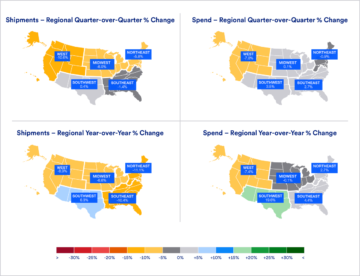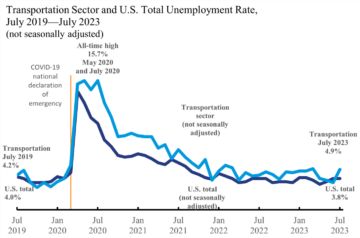
The Fourth Industrial Revolution, or Industry 4.0, is rapidly impacting how global manufacturers operate.
Manufacturers are realizing increased adaptability, agility and profitability through adoption of Industry 4.0 technology The global market for such applications is predicted to nearly triple between 2021 and 2029.
The idea behind Industry 4.0 innovations for manufacturing is to take existing automation processes and strengthen them with such tools as the internet of things (IoT), machine learning, augmented reality and cloud and edge computing, among others. By tapping these new technologies, manufacturers increase cross-team visibility, functionality and, ultimately, their bottom lines.
Following are three key approaches to adoption of Industry 4.0 technology, to ensure that businesses reap the full benefits of these innovations, capture the most value and maximize return on investment.
Go beyond cloud capability — build from the cloud up. Cloud computing is a foundational component of Industry 4.0. As such, it’s critical that the 4.0 technology not be just cloud-capable, but built for the cloud.
Cloud computing centralizes data storage, data and bandwidth processing, and even enables faster transmission of information across teams. This creates opportunities for more collaboration, and makes traditionally slow processes more efficient.
Further, cloud computing adds an extra layer of defense for data security, to safeguard organizational operations from cyberattack. Manufacturers can scale services to meet and demand, and “pay as they go” depending on their needs.
As an example, Volkswagen and Microsoft partnered to further Industry 4.0 adoption in Volkswagen’s Car.Software Organization to build an automated driving platform to streamline the development processes of driving functions that can be tested, deployed and operated via the Volkswagen Automotive Cloud.
Take a competitive Edge, tapping AI and IoT. By ensuring that the technology has an edge computing infrastructure, manufacturers can further set up their businesses for success.
The research and advisory firm IDC defines edge as “the technology-related actions that are performed outside of the centralized data center, where edge is the intermediary between the connected endpoints and the core IT environment.” IDC predicts that global spending on edge computing will hit $176 billion this year, a 14.8% increase from 2021.
The ability of artificial intelligence to connect endpoint devices to the overall operation makes this technology a key player in edge computing, and AI-based devices are expected to lead its growth.
Additionally, IoT devices drive business advantages, in that they make data easier to access and to be processed at the device level. It’s reported that 45% of manufacturers are adopting IoT technology for industrial automation, with quality assurance and production flow monitoring also top-of-mind.
As AI and IoT continue to transform edge computing capabilities, manufacturers should be keen to adopt these technologies early, to maximize value from Industry 4.0 as well as position the business as an industry leader and innovator.
Consider the bigger picture and plan. Although the capabilities and features of Industry 4.0 technology are revolutionizing manufacturing, they must be adopted with a strategy in place to make them valuable
It’s time for supply chain managers and manufacturing leaders to rethink their planning approach. Industry 4.0 technology provides greater visibility and communication abilities for manufacturing teams, allowing managers to renavigate planning from a quantity-first to quality-first mindset. The shift will help to manage exaggerated lead times for overall product mix — both finished goods and raw materials — and drive cost savings.
The manufacturing industry is experiencing one of the largest shifts in technology since the Industrial Revolution. Tapping into technology has the power to propel businesses to the front of the pack, so long as it’s done with the right timing and strategic approach.
Industry leaders must understand the capabilities of Industry 4.0 technologies and how each can be used to support overall business performance. With close attention to detail and careful planning, every company can position itself for success.
Anise Madh is general manager of LeanSwift.
- SEO Powered Content & PR Distribution. Get Amplified Today.
- Platoblockchain. Web3 Metaverse Intelligence. Knowledge Amplified. Access Here.
- Source: https://www.supplychainbrain.com/blogs/1-think-tank/post/36550-how-manufacturers-can-realize-the-full-value-of-industry-40-technology
- 2021
- a
- abilities
- ability
- access
- across
- actions
- Adds
- adopt
- adopted
- Adoption
- advantages
- advisory
- AI
- Allowing
- among
- and
- applications
- approach
- approaches
- artificial
- artificial intelligence
- assurance
- attention
- augmented
- Augmented Reality
- Automated
- Automation
- automotive
- Bandwidth
- behind
- benefits
- between
- Beyond
- bigger
- Bottom
- build
- built
- business
- business performance
- businesses
- capabilities
- capture
- car
- careful
- Center
- centralized
- chain
- Close
- Cloud
- cloud computing
- collaboration
- Communication
- company
- competitive
- component
- computing
- Connect
- connected
- continue
- Core
- Cost
- cost savings
- creates
- critical
- Cyberattack
- data
- Data Center
- data security
- data storage
- Defense
- Defines
- Demand
- Depending
- deployed
- detail
- Development
- device
- Devices
- drive
- driving
- each
- Early
- easier
- Edge
- edge computing
- efficient
- enables
- Endpoint
- ensure
- ensuring
- Environment
- Ether (ETH)
- Even
- Every
- example
- existing
- expected
- experiencing
- extra
- faster
- Features
- Firm
- flow
- Forbes
- Fourth
- fourth industrial revolution
- from
- from 2021
- front
- full
- functionality
- functions
- further
- General
- Global
- global market
- goods
- greater
- Growth
- help
- How
- HTTPS
- IDC
- idea
- in
- Increase
- increased
- industrial
- Industrial Revolution
- industry
- industry 4.0
- industry Leader
- information
- Infrastructure
- innovations
- Innovator
- Intelligence
- intermediary
- Internet
- internet of things
- investment
- iot
- iot devices
- IT
- itself
- Keen
- Key
- largest
- layer
- lead
- leader
- leaders
- learning
- Level
- lines
- Long
- machine
- machine learning
- make
- MAKES
- manage
- manager
- Managers
- Manufacturers
- manufacturing
- manufacturing industry
- Market
- materials
- Maximize
- Meet
- Microsoft
- Mindset
- monitoring
- more
- more efficient
- most
- nearly
- needs
- New
- New technologies
- ONE
- operate
- operated
- operation
- Operations
- opportunities
- organization
- organizational
- Others
- outside
- overall
- Pack
- performance
- picture
- Place
- plan
- planning
- platform
- plato
- Plato Data Intelligence
- PlatoData
- player
- position
- power
- Predicts
- processes
- processing
- Product
- Production
- profitability
- Propel
- provides
- quality
- rapidly
- Raw
- Reality
- realize
- realizing
- Reported
- research
- return
- Revolution
- Revolutionizing
- Savings
- Scale
- security
- Services
- set
- shift
- Shifts
- should
- since
- slow
- So
- Software
- Spending
- storage
- Strategic
- Strategy
- streamline
- Strengthen
- success
- such
- supply
- supply chain
- support
- Take
- teams
- Technologies
- Technology
- The
- their
- things
- this year
- three
- Through
- time
- times
- timing
- to
- tools
- traditionally
- Transform
- Ultimately
- understand
- value
- via
- visibility
- volkswagen
- will
- year
- zephyrnet












